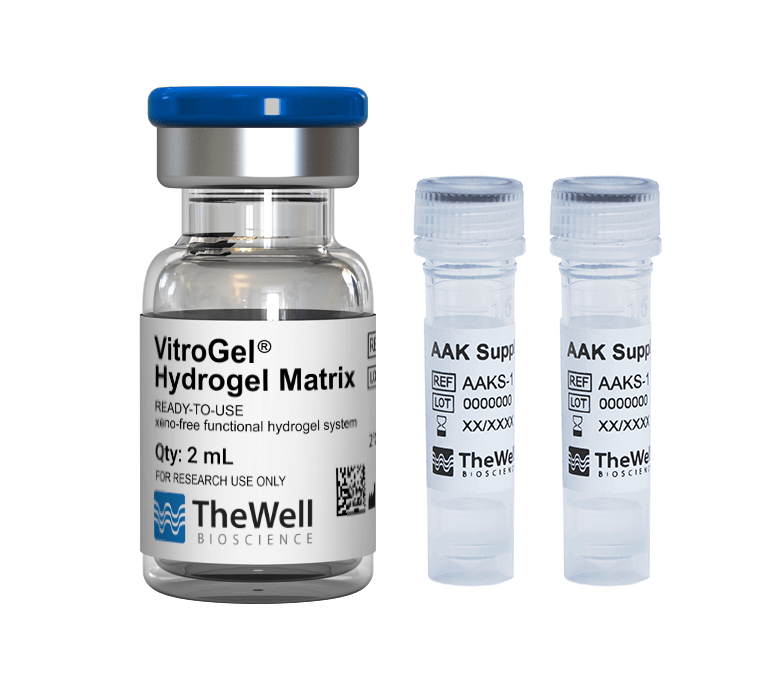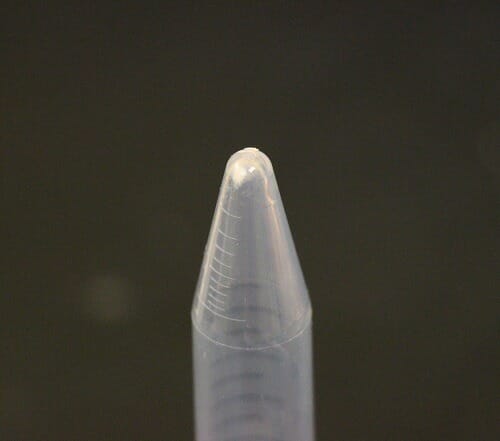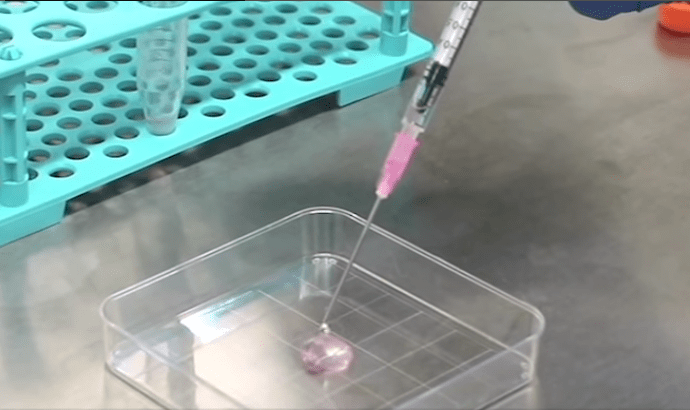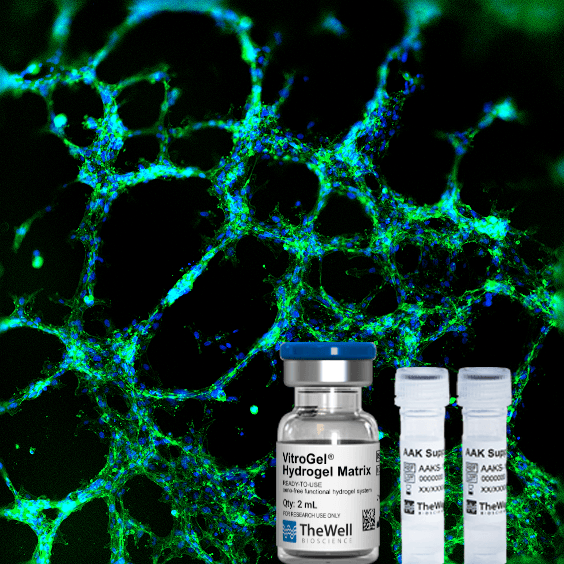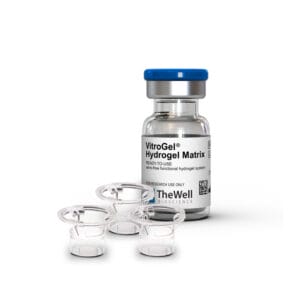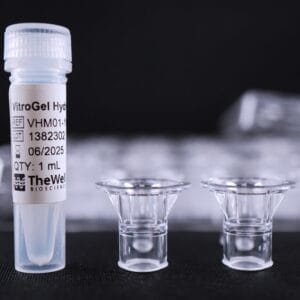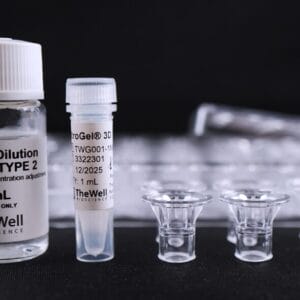Xeno-Free Angiogenesis Cell Models Using the VitroGel System
VitroGel® Angiogenesis Assay Kit
ready-to-use, hydrogel system for 2D gel coating and 3D culture of angiogenesis tube formation, invasion, and animal injection.
VitroGel Angiogenesis Assay Kit
- Xeno-free hydrogel system supporting the angiogenesis process
- Multiple applications in one kit: Tube formation, invasion, and animal injection
- Control the hydrogel properties: Add your own growth factors and compare with positive control
- Easy, efficient, and enzyme-free cell harvesting in 20 minutes
VitroGel Angiogenesis Assay Kit is a revolutionary tool for researchers to study the effect of both hydrogel properties and culture medium on the angiogenesis process. The kit can be used to study the angiogenesis tube formation and invasion on both 2D hydrogel coating method and 3D cell culture method. The VitroGel system is also good for animal injection for in vivo study.
Angiogenesis is a highly regulated process that involves the growth of new blood vessels from the existing vasculature. This process plays an important role in both normal developmental processes and numerous pathologies, including wound healing, tumor growth, and metastasis to inflammation and ocular disease.
Traditional angiogenesis assay highly relies on natural extracellular matrix (natural ECM), which has non-adjustable hydrogel compositions and properties. Therefore, our understanding of the angiogenesis process is limited by studying the molecular cues such as growth factors and inhibitors in culture medium only. There is a lack of knowledge on how hydrogel properties affect the angiogenesis process.
There are two versions of VitroGel Angiogenesis Assay Kits:
- VitroGel Angiogenesis Assay Kit (Ready-To-Use): Ready-to-use with a fixed hydrogel mechanical strength to support the angiogenesis assay with adjustable supplements
- VitroGel Angiogenesis Assay HC Kit (Cat No. TWG011-K): Assay kit with a tunable high-concentration hydrogel to allow full control of the hydrogel’s mechanical strength with adjustable supplements.
Depending on the kit type, the ready-to-use VitroGel Angiogenesis Assay Kits can contain the following components:
- VitroGel Hydrogel Matrix, a xeno-free ready-to-use hydrogel.
- AAK Supplement 1, a hydrogel supplement without vascular endothelial growth factors (VEGFs) for cell attachment and growth.
- AAK Supplement 2, a hydrogel supplement with VEGFs to promote tube formation and as a positive control.
All the components can be purchased separately.
Additional AAK Supplements can be purchased separately here >
The VitroGel Hydrogel Matrix is room temperature stable and can be directly mixed with each supplement at 2:1 (v/v) ratio for hydrogel formation. Researchers can adjust the hydrogel’s molecular cues by adding the growth factors/inhibitors directly to the supplements before mixing with the VitroGel Hydrogel Matrix hydrogel. Cells cultured in this system can be harvested further easily with the VitroGel Cell Recovery Solution.
2D Hydrogel Coating for Tube Formation and Invasion Workflow
3D Cell Culture Workflow
Specifications
| TYPE 1 Kit Contents | |
| TYPE 2 Kit Contents | |
| TYPE 3 Kit Contents | |
| Formulation | |
| Use | Angiogenesis Assay, tube formation, invasion, animal injection |
| Biocompatibility | Biocompatible, safe for animal studies |
| Injection | Injectable hydrogel for in vivo studies and lab automation |
| Cell Harvesting | VitroGel Organoid Recovery Solution 5-15 min cell recovery |
| pH | Neutral |
| Shipping | Supplements require dry ice shipment. |
| Storage | |
| Number of Uses | 60 uses at 50 µL per well |
Recommended Product
Recover cells from the hydrogel within 15 minutes with high cell viability. Non-enzymatic system.
Protocols / Handbooks / Resources
Product Documentations
![]() Product Data Sheet
Product Data Sheet
![]() Frequently Asked Questions
Frequently Asked Questions
![]() Material Safety Data Sheet (MSDS)
Material Safety Data Sheet (MSDS)
Video Protocols & Demonstrations
Application Notes
APPLICATION NOTE
Data and References
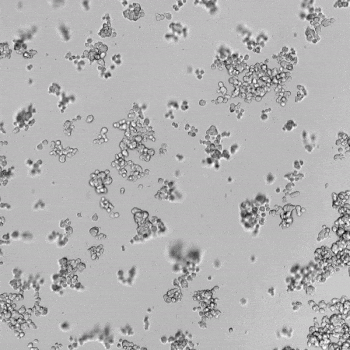

Figure 1. Tube formation of endothelial cells on top of VitroGel AAK hydrogel with tube formation supplement, AAK Supplement 2.
The time-lapse video above shows the tube formation during 18 hours after Human Umbilical Vein Endothelial Cells (HUVEC) seeding on top of VitroGel AAK hydrogel with AAK Supplement 2. The image above shows the tube morphology of HUVEC cells on top of VitroGel AAK hydrogel. The cells were fixed and stained with DAPI (blue) and ActinGreen™ (green).

Figure 2. HUVEC cell growth on top of VitroGel AAK hydrogel with cell growth supplement, AAK Supplement 1.
The image above shows HUVEC cells attached and growing on the surface of VitroGel AAK hydrogel with cell growth supplement, AAK Supplement 1. The cells were fixed and stained with DRAQ5™ (red) and ActinGeen™ (green).
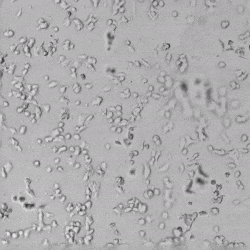



Figure 3. Comparison of the growth of endothelial cells on top of VitroGel AAK hydrogel with and without growth factor supplement.
Top Row) The time-lapse video shows the tube formation during 18 hours after Human Umbilical Vein Endothelial Cells (HUVEC) seeding on top of VitroGel AAK hydrogel with AAK Supplement 2 containing VEGFs. The image shows the cells attached on the surface of the hydrogel forming luminal structures after 8 hours, which further developed into a tube structures (red arrows). Bottom Row) HUVEC cells grow on the top of VitroGel AAK hydrogel without the cell growth factors. The time-lapse video shows the poor cell attachment and tube formation when there is a lack of growth factors in the hydrogel matrix. The images show the cells attached on the surface of the hydrogel forming less tube structures (red arrows) than cells with full growth factor supplement.
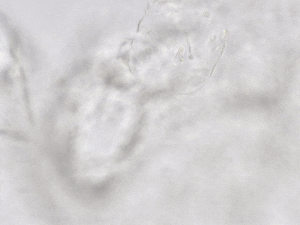
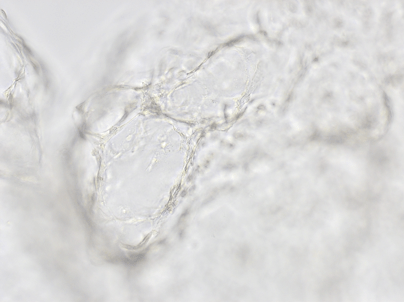
Figure 4. 3D tube structure of HUVEC cells cultured within the VitroGel Angiogenesis Assay Kit. HUVEC cells were mixed with VitroGel AAK hydrogel supplement with tube formation growth factors (AAK Supplement 2) and cultured for 7 days. The video shows the z-stack images of the 3D tube structure formed within the hydrogel. The image above shows the tube networking structure within the VitroGel AAK hydrogel.
References/Publications
| AAK Kit | TYPE 1, TYPE 2, TYPE 3, Hydrogel |
|---|

